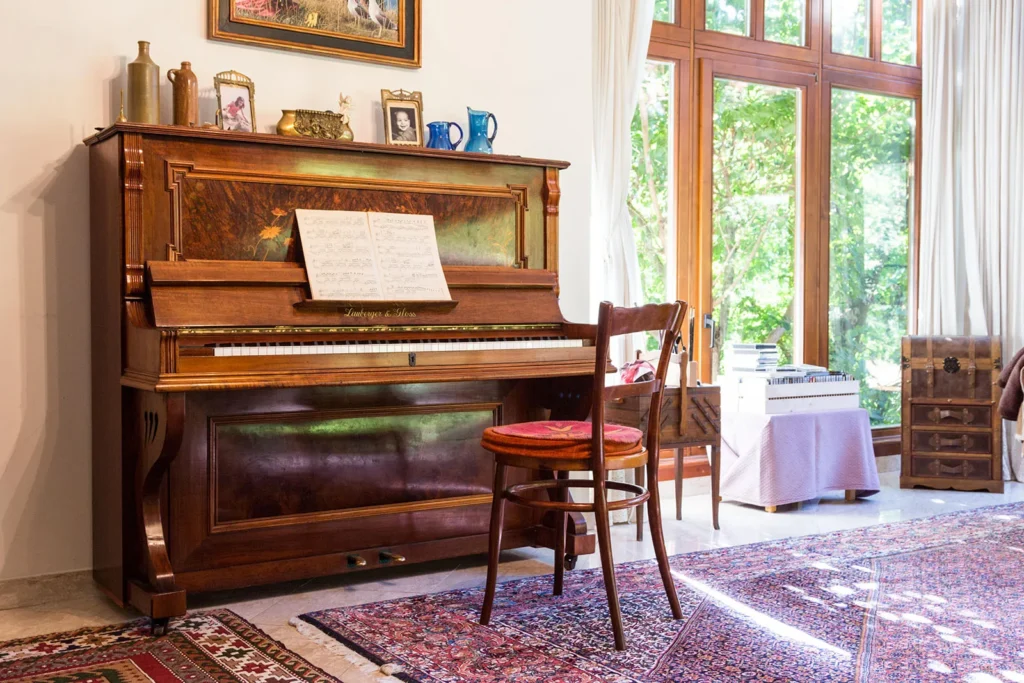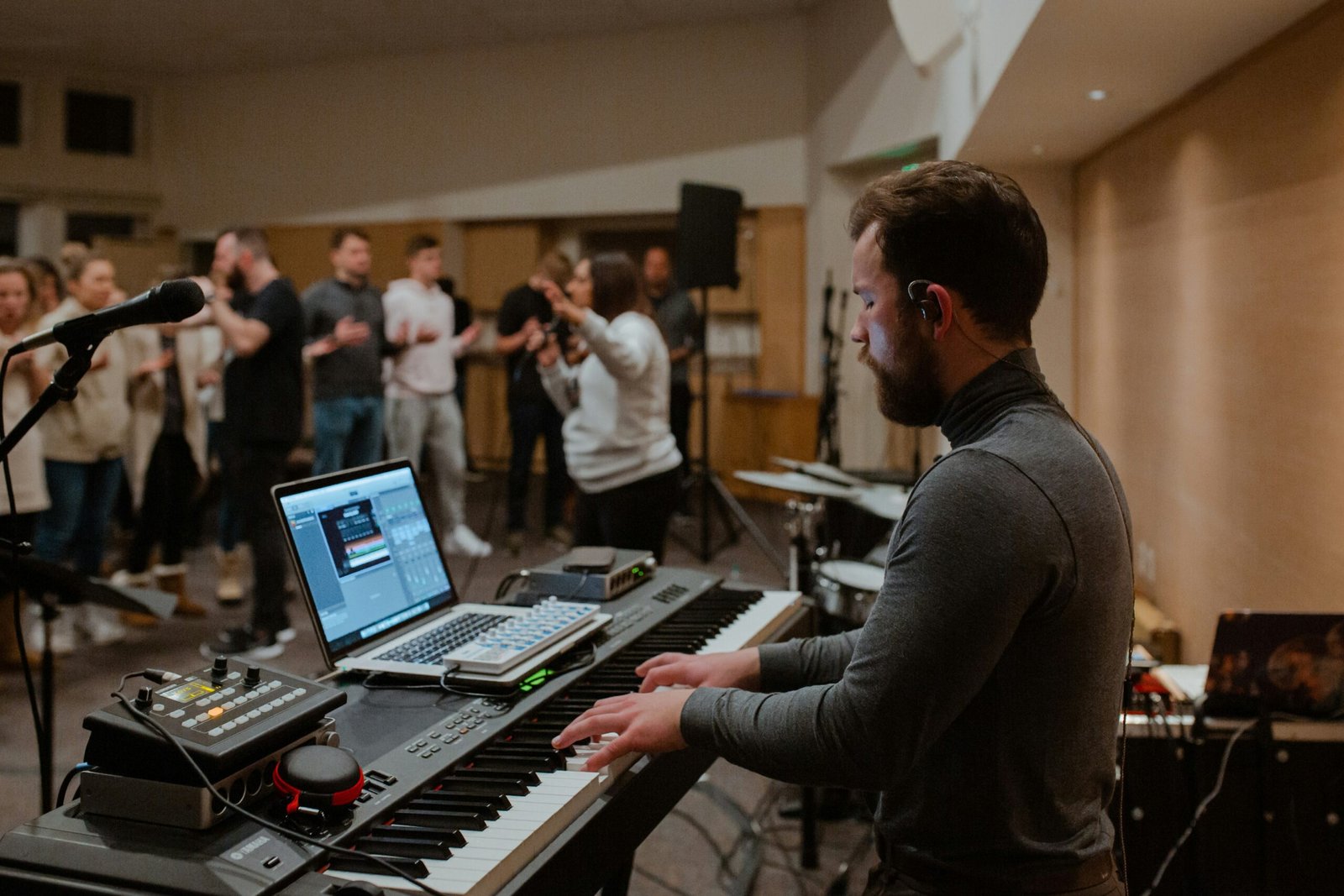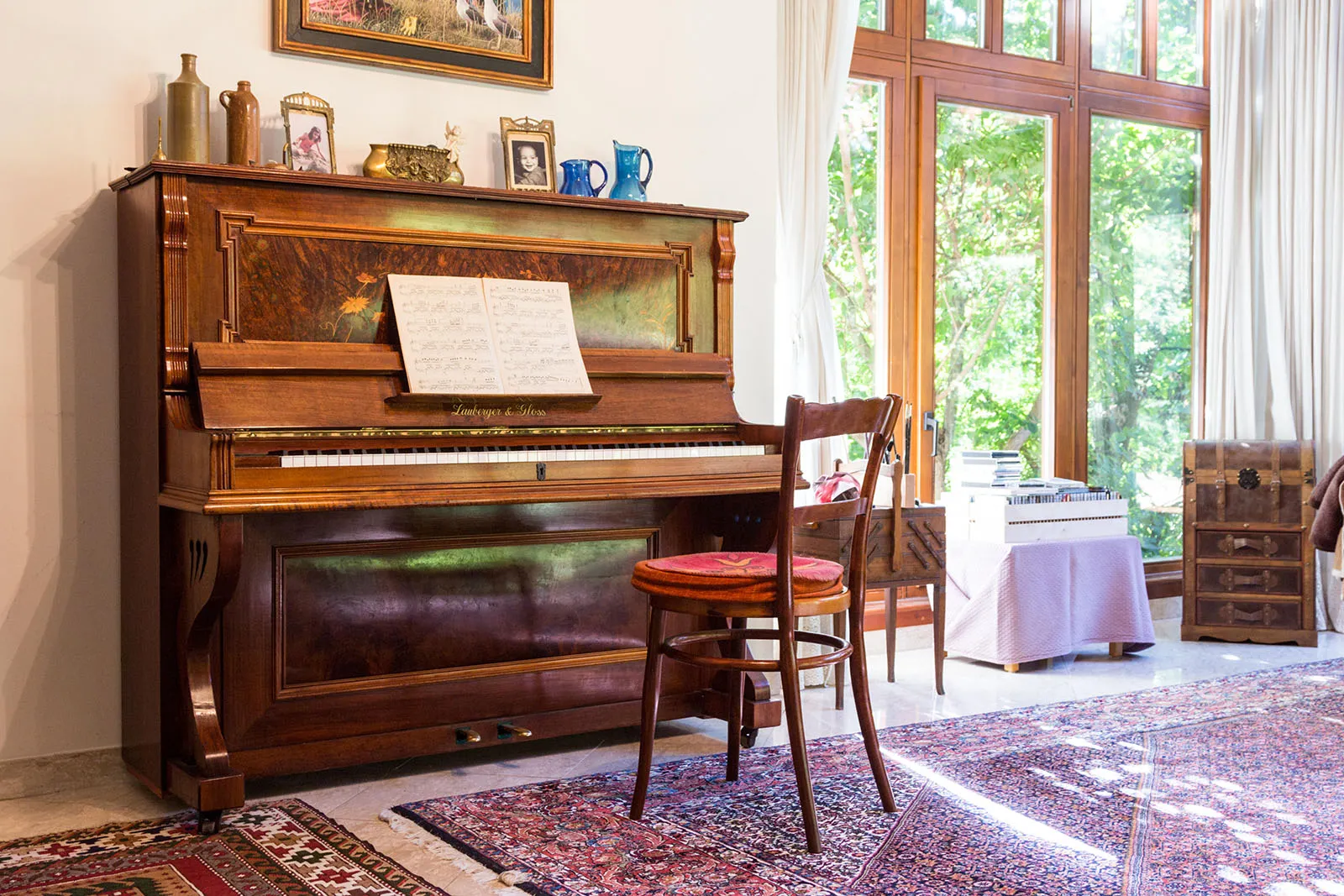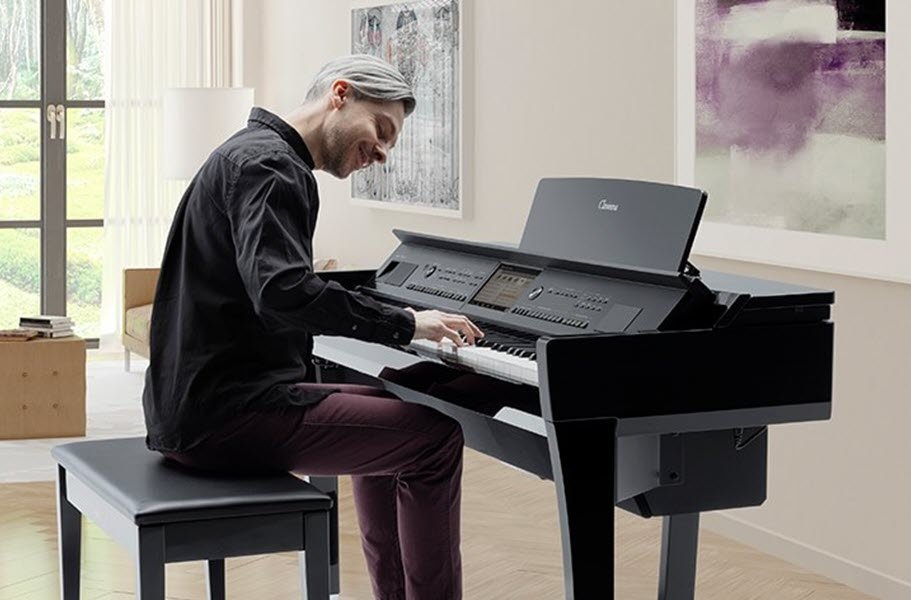Owning a piano is more than just a musical journey; it is a statement of elegance and sophistication. Whether you’ve chosen an upright piano, grand piano, baby grand piano, or a digital piano keyboard, the process of setting up your piano is an exciting and fulfilling experience. A well-thought-out setup not only enhances your playing experience but also preserves your piano for years to come. Let’s delve into the essentials of creating the perfect piano setup for different needs and spaces.

Why Your Grand and Upright Piano Setup Matters
The way you position, maintain, and accessorize your piano directly impacts its sound quality, durability, and your overall playing experience. A thoughtful setup ensures:
- Optimal Acoustics: Positioning your piano correctly can amplify its natural sound.
- Enhanced Aesthetics: Your piano can become the centerpiece of your space.
- Preservation of Quality: Proper setup minimizes exposure to harmful environmental factors.
- Improved Playability: A functional setup promotes better practice sessions.
Your piano is more than an instrument; it’s a source of inspiration, a symbol of your passion for music, and a centerpiece that can transform any room. Investing time in creating the perfect setup will amplify these benefits and make every moment at the keys a memorable one.
Choosing the Ideal Space for Your Grand Piano and Upright Piano
The placement of your piano is crucial for both its sound quality and longevity. Different types of pianos have unique requirements:
For an Upright Piano
The upright piano is a versatile choice that fits seamlessly into most living spaces. To ensure optimal performance:
- Position Against an Interior Wall: Avoid exterior walls to protect it from temperature fluctuations.
- Leave Space for Resonance: Keep a few inches between the piano and the wall to allow sound to resonate.
- Consider Foot Traffic: Place it in a quieter area to prevent disturbances during practice.
- Optimize Surroundings: Add wall-mounted art or curtains to improve both aesthetics and acoustics.
For a Grand or Baby Grand Piano
A grand piano or baby grand piano adds grandeur to any room. Here are tips to showcase and preserve its beauty:
- Central Placement: Position it in the center of a room for a visually striking effect.
- Optimal Lid Position: When space allows, keep the lid open to maximize sound projection.
- Avoid Direct Sunlight: Prolonged exposure to sunlight can fade its finish and damage its internal components.
- Use Rugs and Carpets: Place a rug beneath the piano to soften the sound and protect floors.
For a Digital Piano Keyboard

The digital piano keyboard is ideal for those who value portability and modern features. Here’s how to set it up:
- Dedicated Desk or Stand: Use a sturdy stand to maintain the correct height and stability.
- Cable Management: Organize power and audio cables to prevent tangles and accidents.
- Connectivity Setup: Position near outlets or devices to utilize MIDI and USB connectivity efficiently.
- Multi-Purpose Space: Incorporate it into a home studio or workspace for added versatility.
Tailored Piano Setups for Different Age Groups
For Children and Beginners
For young learners, prioritize functionality and accessibility:
- Compact Upright Piano or Digital Piano Keyboard: These are perfect for small hands and shorter practice sessions.
- Adjustable Bench: Ensure proper posture to develop good playing habits.
- Educational Accessories: Add a music stand and practice aids, like sheet music holders or apps.
- Engaging Environment: Decorate with colorful posters, books, and motivational quotes to spark interest.
For Teenagers and Aspiring Pianists
Teenagers with growing interests in music deserve a dynamic setup:
- Digital Piano Keyboard with Advanced Features: Choose one with recording and layering capabilities.
- Stylish Yet Functional: Opt for modern, sleek designs that resonate with their style.
- Inspiring Surroundings: Decorate with posters, inspirational quotes, or lighting to motivate practice.
- Integrated Technology: Pair with apps or software for an interactive learning experience.
For Adults and Professionals
Adults and seasoned pianists may opt for a more sophisticated setup:
- Grand Piano or Baby Grand Piano: These provide unparalleled sound quality and aesthetics.
- Custom Seating: Invest in a padded, adjustable bench for prolonged sessions.
- Acoustic Enhancements: Add rugs, curtains, or acoustic panels to perfect the sound.
- Concert-Level Accessories: Include quality headphones, sheet music storage, and advanced pedals for enhanced performance.
Essentials for the Perfect Grand Piano and Upright Piano Setup
Lighting
Good lighting is critical for reading sheet music and creating an inviting atmosphere:
- Task Lighting: Use adjustable lamps to focus light on the sheet music.
- Ambient Lighting: Install soft, warm lights to enhance the room’s elegance.
- Smart Lighting: Use dimmable or color-changing lights to set the mood for performances or practice sessions.
Temperature and Humidity Control
Pianos are sensitive to environmental changes. Protect your instrument by:
- Maintaining Stable Temperatures: Keep the room between 18°C and 24°C (65°F to 75°F).
- Using a Humidifier or Dehumidifier: Maintain a humidity level of 40%-50%.
- Placing Away from Vents: Avoid positioning near air vents, radiators, or fireplaces.
- Regular Monitoring: Use a hygrometer to ensure consistent conditions.
Accessories to Elevate Your Setup
For Upright and Grand Pianos:
- Covers: Protect the finish and keys when not in use.
- Pedal Extensions: Ideal for younger players.
- Caster Cups: Prevent floor damage and keep the piano stable.
For Digital Piano Keyboards:
- Headphones: Practice without disturbing others.
- External Speakers: Enhance sound output for performances.
- Tablet or Device Mounts: Simplify access to digital sheet music and apps.
Customizing Your Space
The surrounding area should complement the piano and enhance your experience:
- Decorative Elements: Add plants, artwork, or family photos to create a warm, inviting atmosphere.
- Soundproofing Options: Install soundproof curtains or panels to reduce noise disruptions.
- Ergonomic Considerations: Arrange furniture to ensure comfort during long practice sessions.
Enhancing the Ownership Experience
Beyond the technicalities, your piano setup should reflect your personality and taste. Here are additional tips to make the ownership experience truly special:
- Personalized Decor: Frame and display your favorite sheet music or photos.
- Community Engagement: Invite friends or family for small recitals or jam sessions.
- Regular Maintenance: Schedule professional tunings and cleanings to preserve the instrument’s quality.
- Joining Clubs or Communities: Connect with fellow enthusiasts to share knowledge and experiences.
The Emotional Connection
Creating your piano setup is as much about heart as it is about practicality. Consider:
- Journaling Progress: Keep a log of your milestones and achievements.
- Sharing Music: Record and share your performances with loved ones.
- Celebrating Ownership: Treat your piano as a treasured family heirloom, a legacy to pass down.
Conclusion
Creating the perfect setup for your upright piano, grand piano, baby grand piano, or digital piano keyboard is a rewarding endeavor that goes beyond aesthetics and acoustics. It’s about crafting an environment where inspiration thrives and every note resonates with pride and joy. Whether you’re a budding pianist or a seasoned virtuoso, the right setup transforms your piano from an instrument into a cherished companion. Take pride in your planning, and enjoy every moment of your piano ownership journey.
Remember, the beauty of a piano lies not just in its sound but in the memories and moments it creates. Invest in a thoughtful setup, and let your piano become a source of lifelong inspiration.
For further reading : https://en.wikipedia.org/wiki/Piano
For more articles : https://pianopassion.org/










Leave a Reply